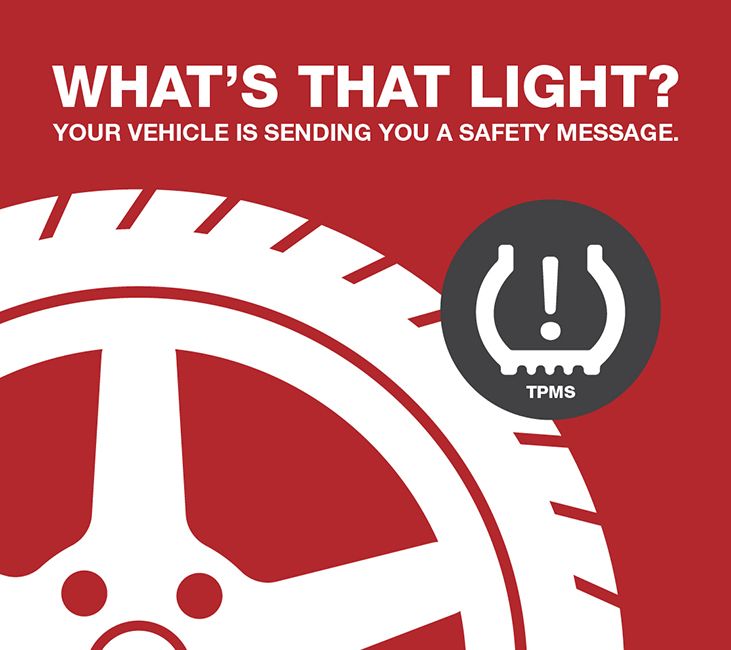Get To Know Your Tire Pressure Monitoring System Safety Device
The National Highway Traffic Safety Administration (NHTSA) requires all vehicles made after 2007 to come equipped with a Tire Pressure Monitoring System (TPMS) warning system. The TPMS light on your dash is a safety device that wirelessly monitors tire pressure through a sensor in your tires and the valve attached to it. If your TPMS light comes on, it’s telling you something— don’t ignore it!

IF YOUR TIRES ARE NOT PROPERLY INFLATED, YOU COULD BE RISKING:
- Your safety. Underinflated tires can cause catastrophic tire failure, leading to accidents.
- Your tire performance. Underinflated tires can lose traction and responsiveness in all weather conditions.
- Lower fuel economy.1 Underinflated tires make your vehicle work harder and use more fuel.
- Increased tire wear. Underinflated tires can wear out your tires faster.
IF YOUR TPMS LIGHT IS BLINKING OR SOLID, HERE’S WHAT IT MEANS:
If your TPMS light blinks 3-5 times and then turns solid, your system is malfunctioning and requires some type of service. One or more of your TPMS sensors are not communicating with the system.
If your TPMS light illuminates and remains sold, you have a pressure issue inside your tires based on the manufacturer’s recommended tire pressure. You can find the recommended tire pressure on the tire placard sticker, located on the driver’s side door jamb or on the gas tank door.
When should you service your TPMS sensors and valves?
TPMS sensors are battery powered and last 7-10 years and/or 100,000 miles. The battery inside the sensor isn’t replaceable, so when you have one sensor replaced due to battery failure, it’s recommended you replace all four sensors.
A proper TPMS service requires a special tool and a reset of the sensor system in your vehicle, so make sure a professional mechanic, like your trusted technician at Wheel Works performs this service. You can rest easy knowing Wheel Works only carries the highest standard TPMS sensors that work with nearly all of the vehicles on the road, so we have you covered.
Maintaining the TPMS tire valve is also very important in preventing air loss that could cause the solid light to come on. Your TPMS sensor comes equipped with a metal or rubber valve stem, and each valve has specific components that need to be replaced each time you have new tires installed or during a tire repair. Ask a teammate for more details.
1Source: National Highway Traffic Safety Administration, Tire Fuel Efficiency Consumer Information Program
